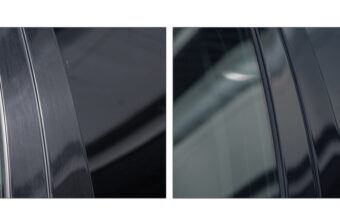The amount of heat reduction provided by window tinting depends on various factors, including the type of tint film, its specifications, and the quality of installation. Window tinting can significantly reduce heat gain by blocking or reflecting a portion of the sun’s infrared radiation and visible light.
Here’s how window tinting can reduce heat…
- Solar Absorption – Window tinting films can absorb a portion of the solar energy that enters through the glass, reducing the amount of heat that is transmitted into the interior space. The degree of solar absorption depends on the type of tint film and its specific properties.
- Solar Reflectance – Some window tinting films have reflective coatings that reflect a portion of the solar energy away from the glass, reducing heat gain by preventing it from entering the building or vehicle in the first place. Reflective films are particularly effective at reducing heat from direct sunlight.
- Infrared Rejection – Many window tinting films are designed to block or absorb infrared radiation, which is responsible for the majority of heat transfer through windows. By blocking infrared radiation, window tinting can significantly reduce heat gain and keep the interior space cooler and more comfortable.
The actual amount of heat reduction provided by window tinting can vary depending on factors such as…
- Type of Film – Different types of window tinting films offer varying levels of heat reduction. For example, high-performance ceramic films typically offer superior heat rejection compared to traditional dyed or metallized films.
- Visible Light Transmission (VLT) – Window tinting films with lower VLT ratings allow less visible light to pass through, which can also contribute to heat reduction. However, excessively dark tint may impact visibility and aesthetics.
- Quality of Installation – Proper installation of window tinting is essential for maximizing heat reduction and ensuring long-term performance. Improper installation can lead to gaps, bubbles, or creases that compromise the effectiveness of the tint film.
- Environmental Factors – Environmental conditions such as sunlight intensity, outdoor temperature, and humidity levels can also affect the performance of window tinting. In hot climates with intense sunlight, window tinting may provide more significant heat reduction benefits compared to cooler climates.
High-quality window tinting can provide significant heat reduction benefits, making indoor spaces more comfortable and energy-efficient while reducing reliance on air conditioning and cooling systems. It’s essential to choose the right type of tint film and have it installed professionally to achieve the desired level of heat reduction and performance.






